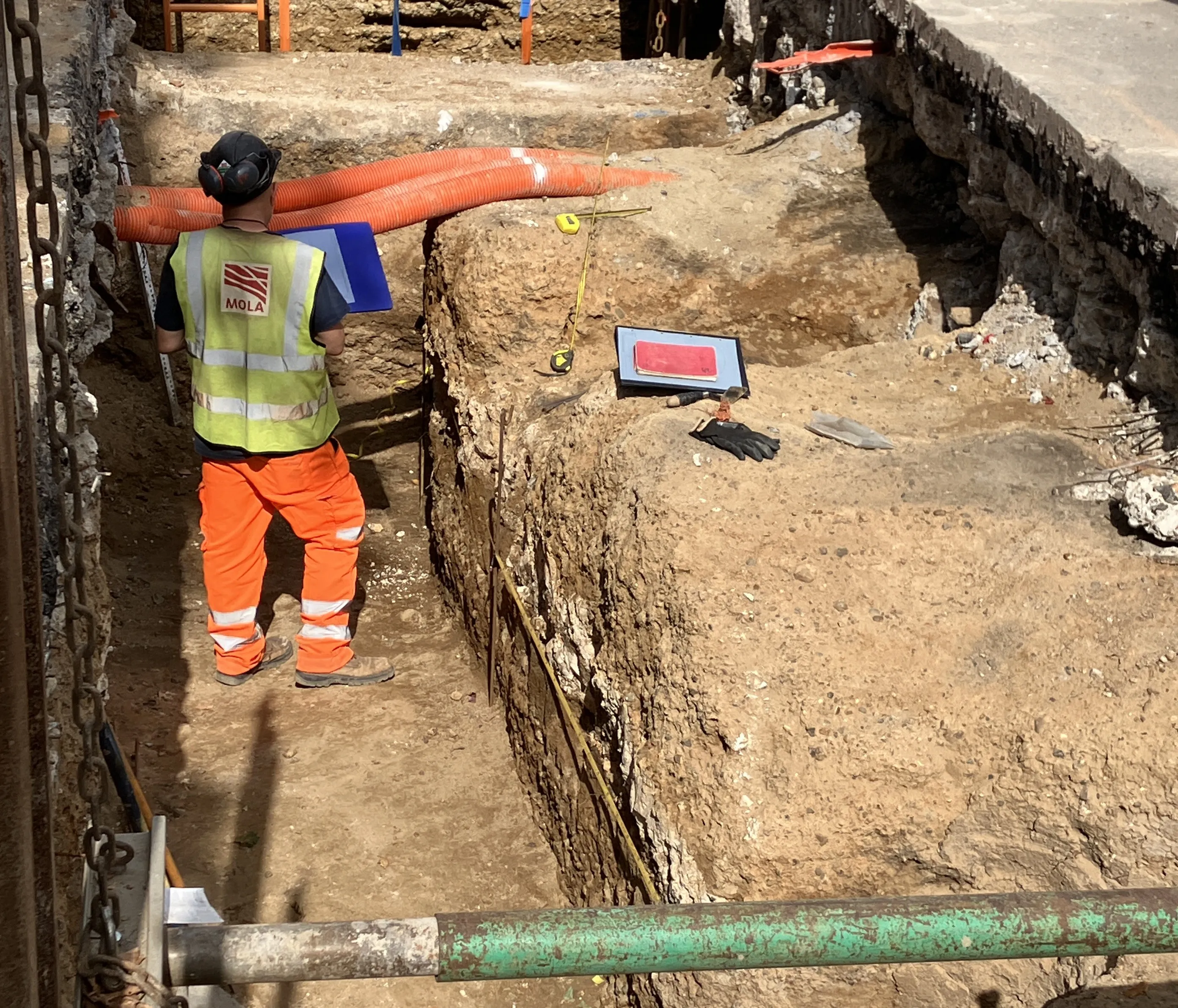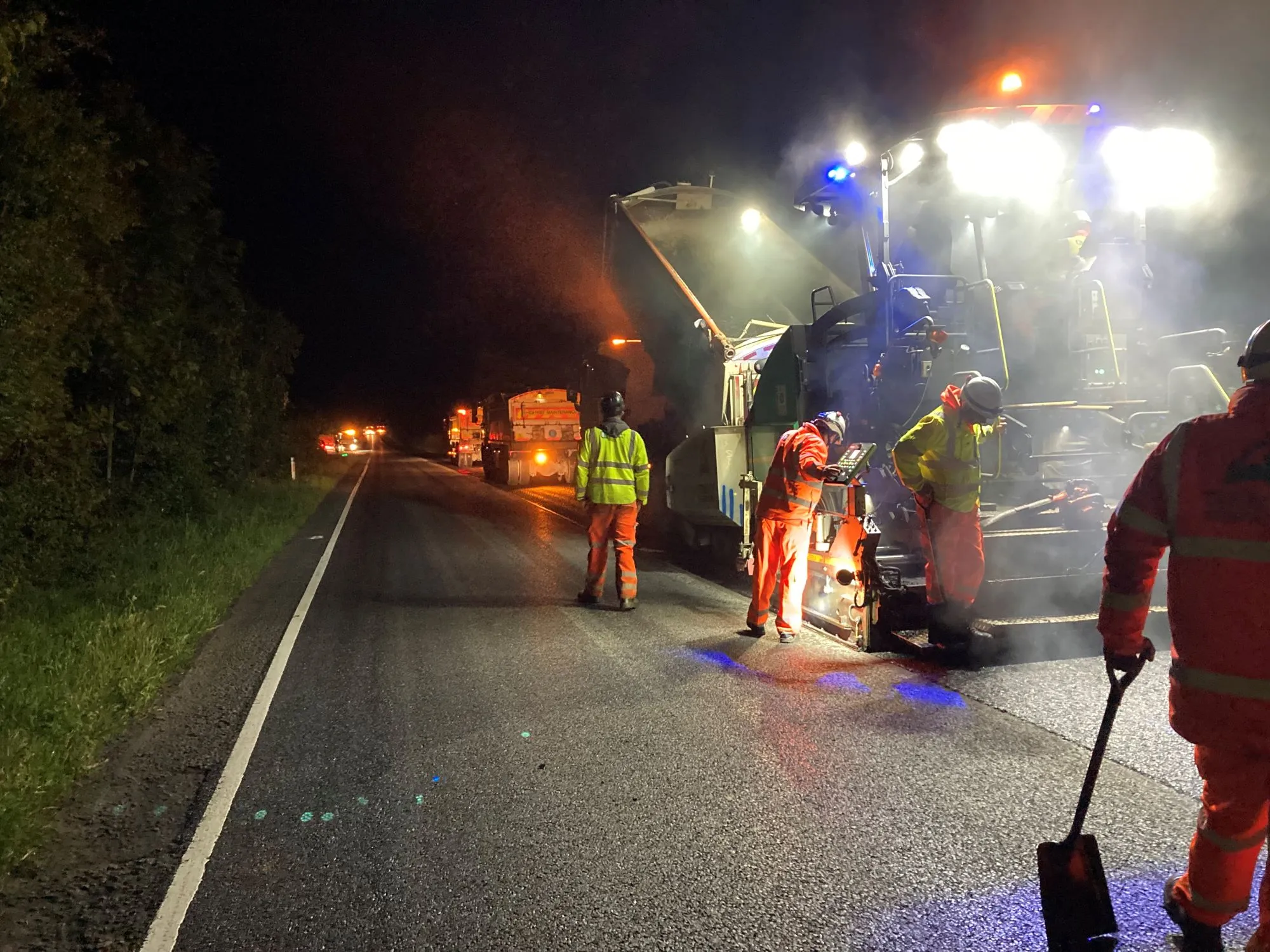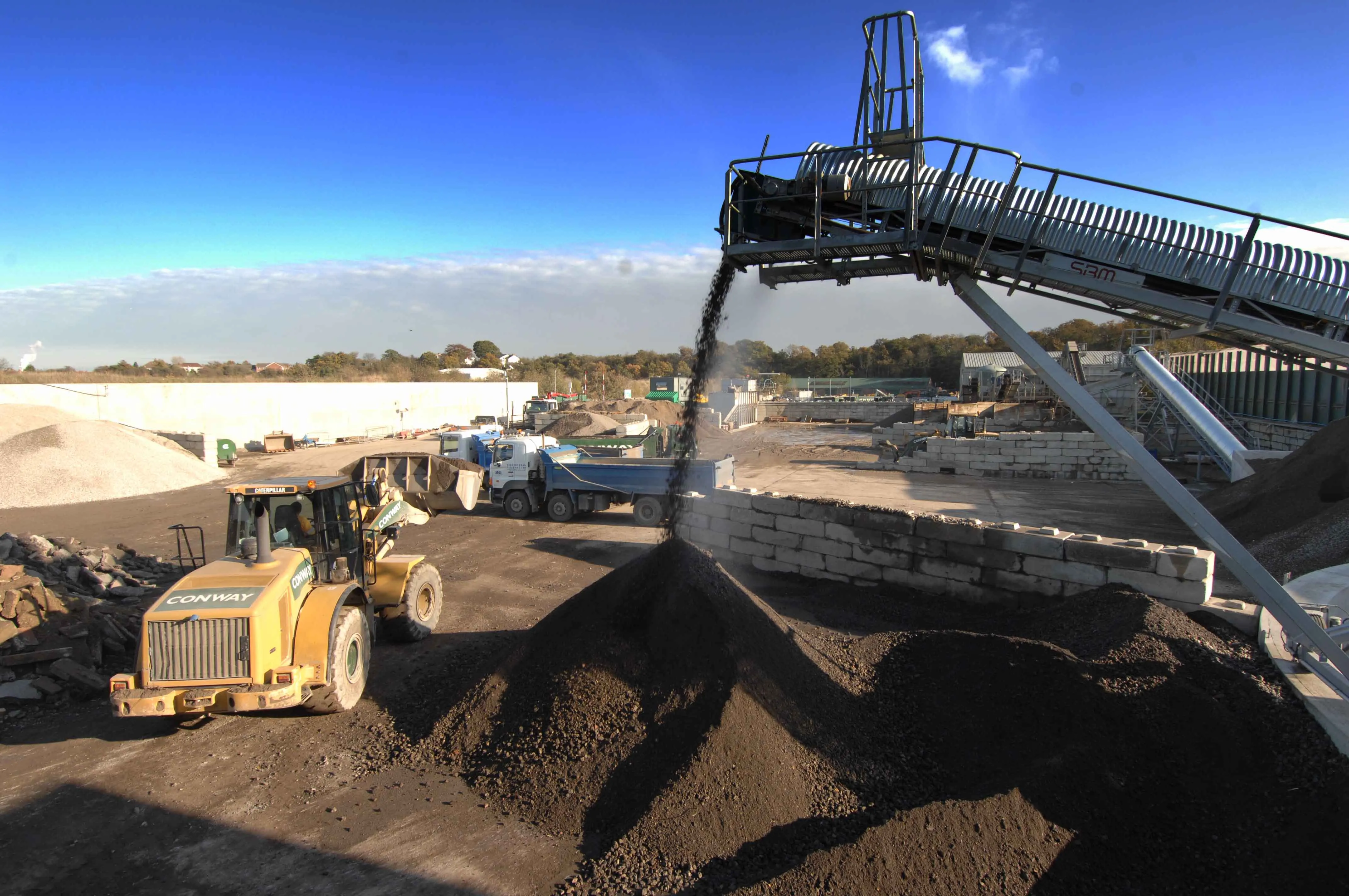
A stretch of 2,000 year old dating back to Roman times has been discovered under Old Kent Road in UK capital, London.
The road was called Watling Street in the past and connected London, or Londinium as it was in Roman times, with the port of Dover (Dubris). Old Kent Road is part of the A2 and the Roman remains were discovered during work by Southwark Council and Veolia to expand Southwark’s low carbon heat network.
Archaeological work has been taking place following the discovery. Although the original Roman road surface is no longer in place, the modern asphalt road surface layers lie directly on top of a road structure that dates back to Roman times. Watling Street was first built in AD 43 after Britain was invaded by the Roman Army and the A2 was thought to follow the original route for much of its length. This latest discovery shows that the A2 does indeed follow the characteristically straight Roman alignment of Watling Street.
The Roman road structure was identified by a team of archaeologists from MOLA (Museum of London Archaeology), working on behalf of Veolia and archaeological consultant RPS, with advice and support from the council’s in-house archaeology officer, Dr Chris Constable.
He said: “I’m pleased this project has answered our questions over the course of the Roman road south of the Cantium Retail Park where a section was excavated in the early 1990s, south of the line of the modern road. In the planning for this project, we’d expected to solve this question but the extent of survival of the road is remarkable. We hope this project will answer some other archaeological questions in the borough.”
Gillian King, director of archaeology at RPS Consulting, said: “The discovery of an intact section of Roman Watling Street directly under the current Old Kent Road has redrawn the Roman road map for Southwark and informs on Roman construction techniques generally. It is a key finding for archaeological research for London.”
Dave Taylor, MOLA project manager said: “It’s amazing this section of road has survived for almost 2000 years. There has been so much activity here over the past few hundred years, from sewers to power cables, tramlines and of course the building of the modern road, so we’re really excited to find such a substantial chunk of Roman material remaining.”
The section of Roman road uncovered was well preserved and measures 5.8m wide by 1.4m high. Distinct layers can be seen, which tell the story of the road’s construction. It has a solid foundation of compacted gravel sealed by two layers of chalk. This was topped with another layer of compacted sand and gravel. The original surface of the road would likely have been made from the same material and sat at a similar level to the modern road, however this has been lost. The base of the modern road rests directly on the Roman fabric.
The discovery will be marked by a sign on the nearby Old Kent Road railway bridge, which is currently undergoing repairs.
Find out about renewal of Old Kent Road at https://oldkentroad.org.uk.









